Four "Lifer" Seabirds
And each with a very unusual name
In Birding, a "lifer" means a bird species that you are seeing for the first time in your life. By traveling to a seaside locale in Washington State it was not surprising that I came across some birds that I had never seen before. What made it more interesting to me was that each one of those species had a name that included a word that people likely never heard of before or, if they had heard of it, they probably couldn't define it.
Pelagic definition: relating to the open sea.
Pelagic Cormorants were all around the piers at the ferry terminal in Anacortes, the spot for catching any ferry boat to any island in San Juan County. Cormorants are members of various species of aquatic birds with incredible swimming and deep-diving skills. In Tucson, we see Neotropic Cormorants, the smallest of the North American Cormorants. We also see Double-crested Cormorants, the most common and abundant Cormorant of North America. In Anacortes, I saw Pelagic Cormorants for the first time ever.
As seen in the photos above and below, the Pelagic Cormorant in breeding season has purple and green highlights. They have neat white patches on their flanks, which make them easy to identify in flight from a distance. The Pelagic Cormorants were bringing seaweed to the piers, likely to be used in building their nests. These Cormorants mostly eat fish. They have been known to dive as much as 138 feet below the surface of the water and can hold their breath underwater for two minutes at a time.
The range map for Pelagic Cormorants looks very different from the range maps I've shared of so many other Tucson area species of birds.
Guillemot definition: The word is a diminutive of the French name "Guillaume" (William). The place name refers to a village in France that was the site of a major battle in World War I. As a bird name, it's used for several species of northern oceanic diving birds.
The Pigeon Guillemot nests on rocky coastlines of the North Pacific. Its range map is similar to that of the Pelagic Cormorant:
I saw a few Pigeon Guillemots at the piers in Friday Harbor on San Juan Island. They are attractive birds with dark brown plumage set off by a bright white patch in the upper-wing and they have vivid scarlet feet.
Pigeon Guillemots dive and swim underwater for prey flapping their wings for propulsion. Birdnote tells us that Pigeon Guillemots are considered an "indicator species". That means they are a species that can indicate the health of the environment.
Glaucous definition: of a dull grayish-green or blue color
I am used to seeing a variety of gulls when I visit southern California. I was surprised that around San Juan Island, I only saw one type of gull- the Glaucous-winged Gull. For me, gulls in general are very difficult to tell apart. Glaucous-winged Gulls have grey wingtips that match the color of their back and upper wing. Most other gulls have black wingtips.
The other difference between the Glaucous-winged Gulls at this location and gulls I've seen in other places is that I just didn't ever see the gulls onshore, on buildings in the harbor, or nearby. Perhaps it was just the season I was there or the time of day, but the gulls were always at a distance. I thought that if I visited some beaches at low tide, I might have a chance of spotting some Glaucous-winged Gulls a bit closer to shore. I did have luck at 4th-of-July Beach where there were just a few gulls.
Then I thought that perhaps low tide was too late, so I went to South Beach the next day more than an hour before low tide. I thought the gulls might be feeding at the water's edge as the water began to recede and expose food items. Bingo! You can see how rocky this beach was, with no exposed sand at all. All the gulls were lined up right at the water's edge looking for any newly exposed morsel to eat.
Harlequin definition: a mute character in traditional pantomime, typically masked and dressed in a diamond-patterned costume.
Harlequin Ducks are seabirds that were named for what has been referred to as the theatrical nature of the male's plumage. Besides the elaborate patterning, the white eyebrow has chestnut highlights and the breast is a slate blue in the right light.
Because Harlequin Ducks seem to prefer rough habitats like rocky shores or rough rivers with big waves, their lifestyle is tough on their bodies. Harlequin Ducks suffer more broken bones than any other species. X-rays and museum specimens have determined that most adults live with multiple healed fractures.
The female Harlequin Duck is a grayish/brown bird with white around the bill and eye and a clean white spot at the rear of its cheek.
Each of those bird species was both new and interesting to see.


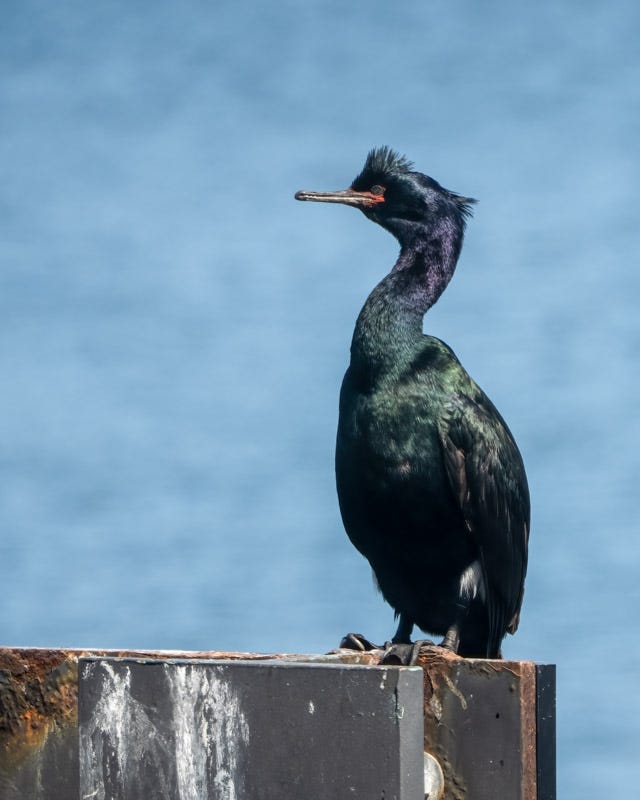
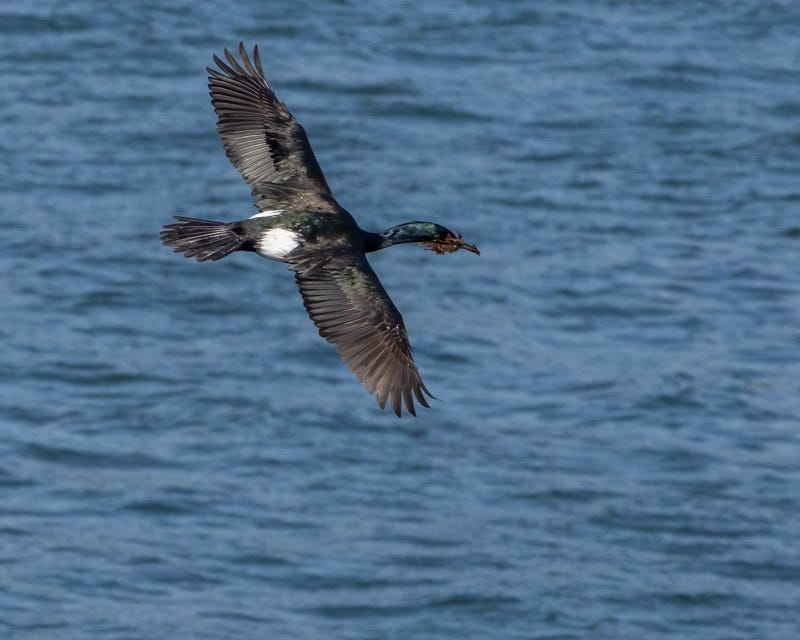
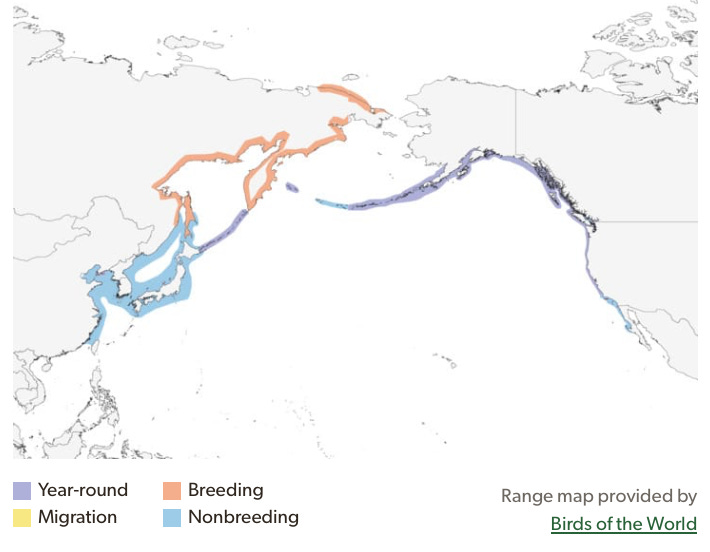
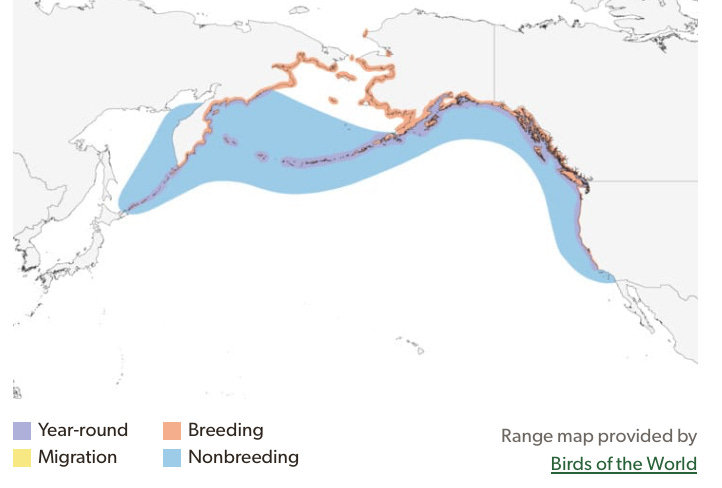
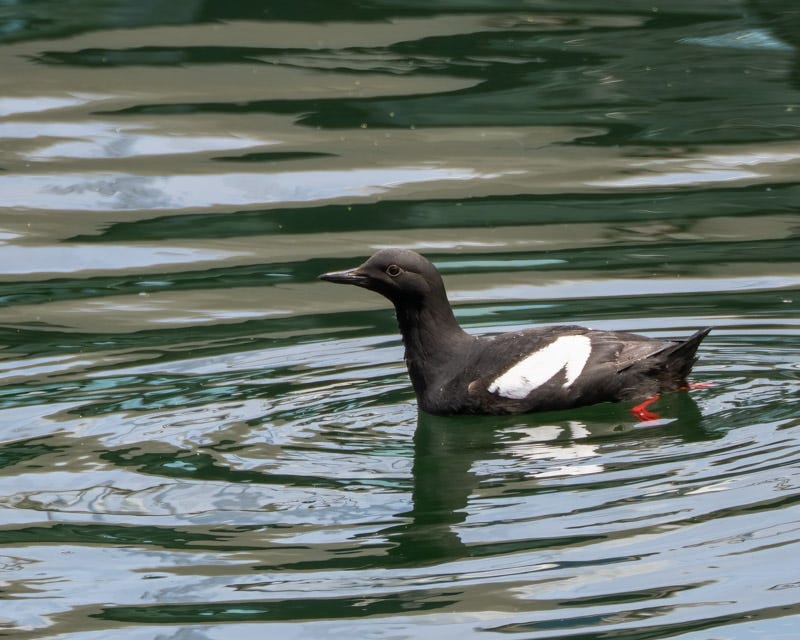
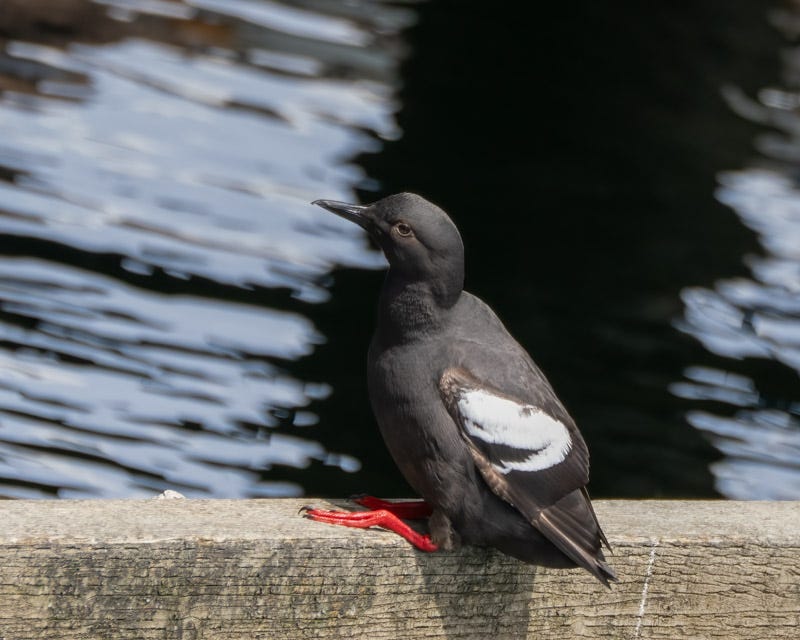

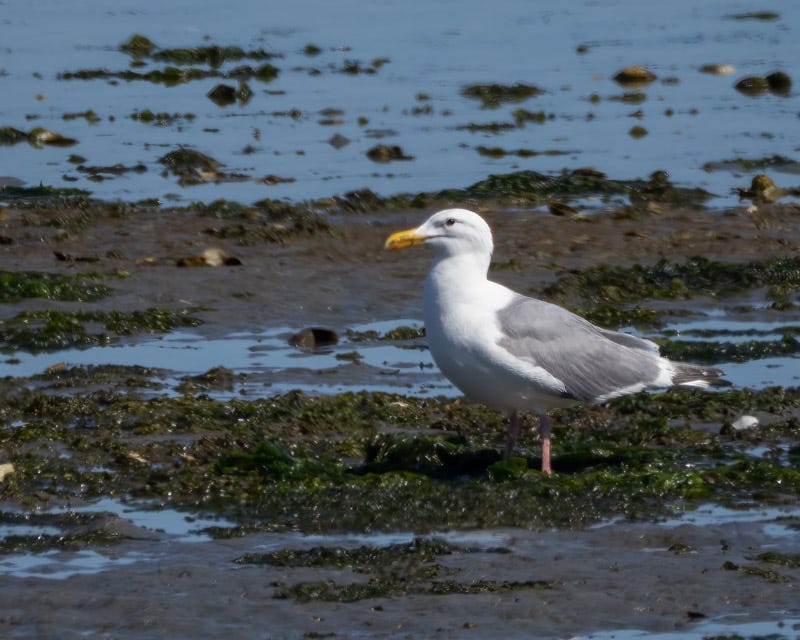
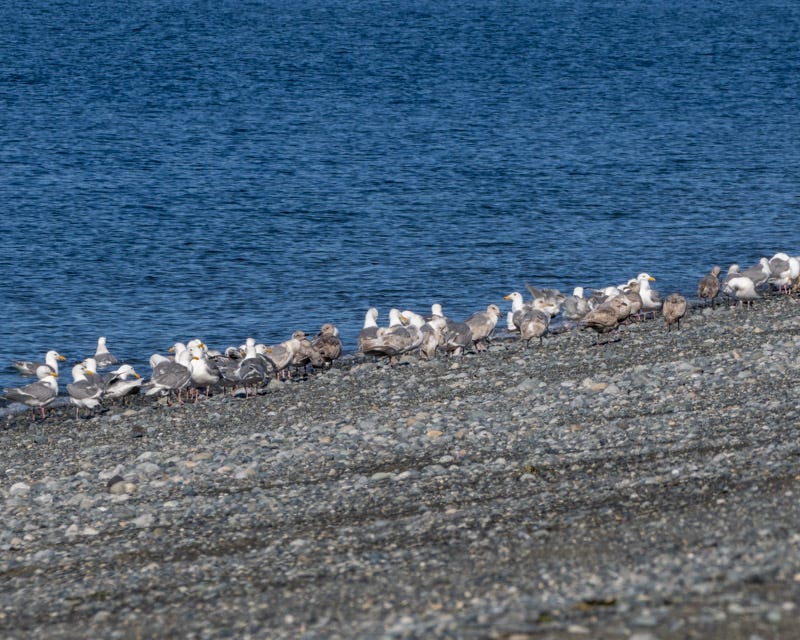
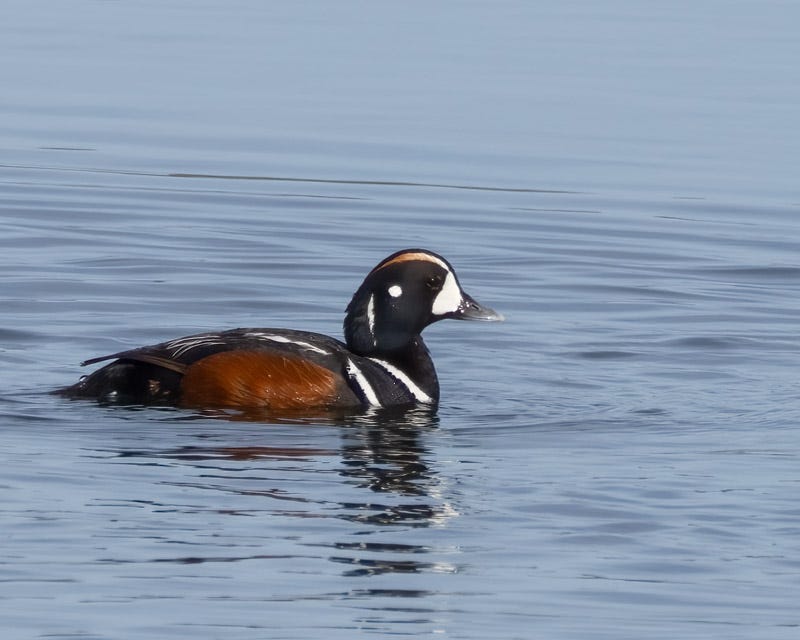
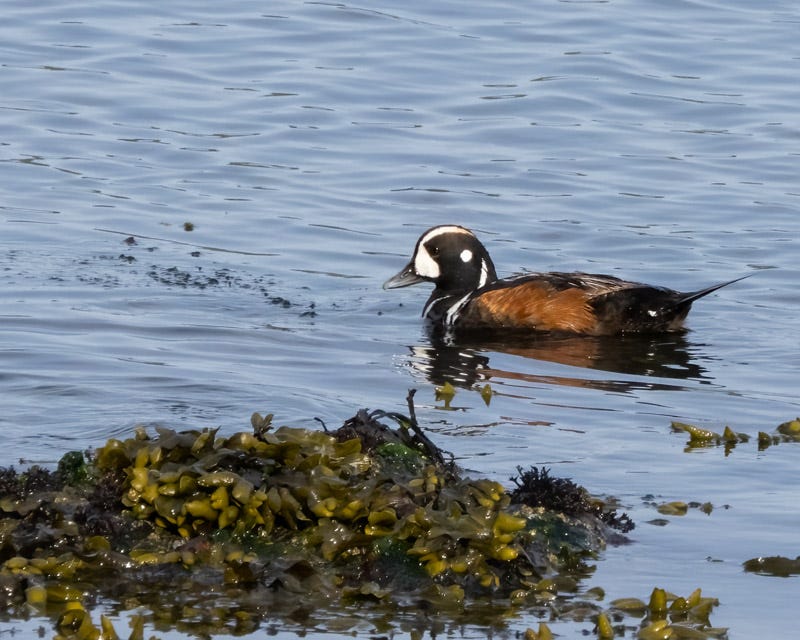
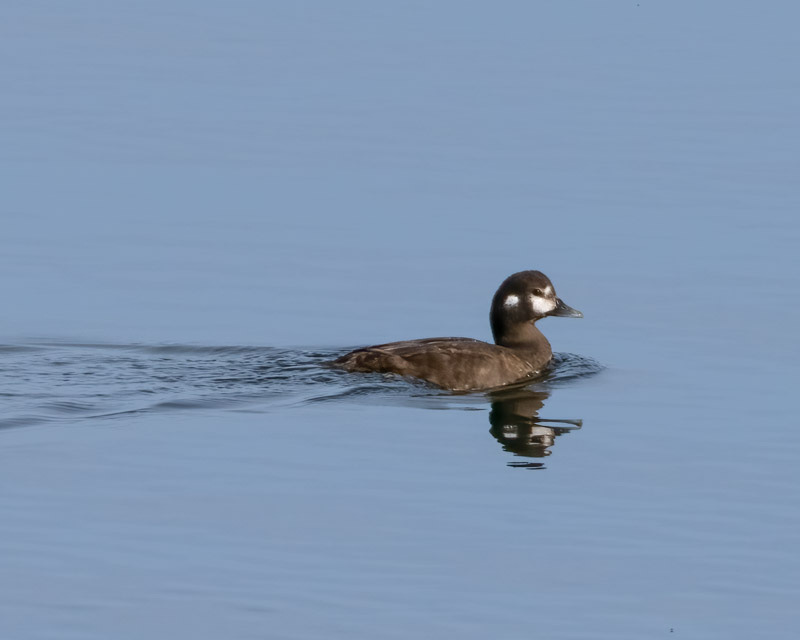
What a treat to see four lifers in a single trip! They’re all stunning!
The markings on the Harlequin Ducks are so striking. Beautiful pictures. Love learning from all you share. Thank you!